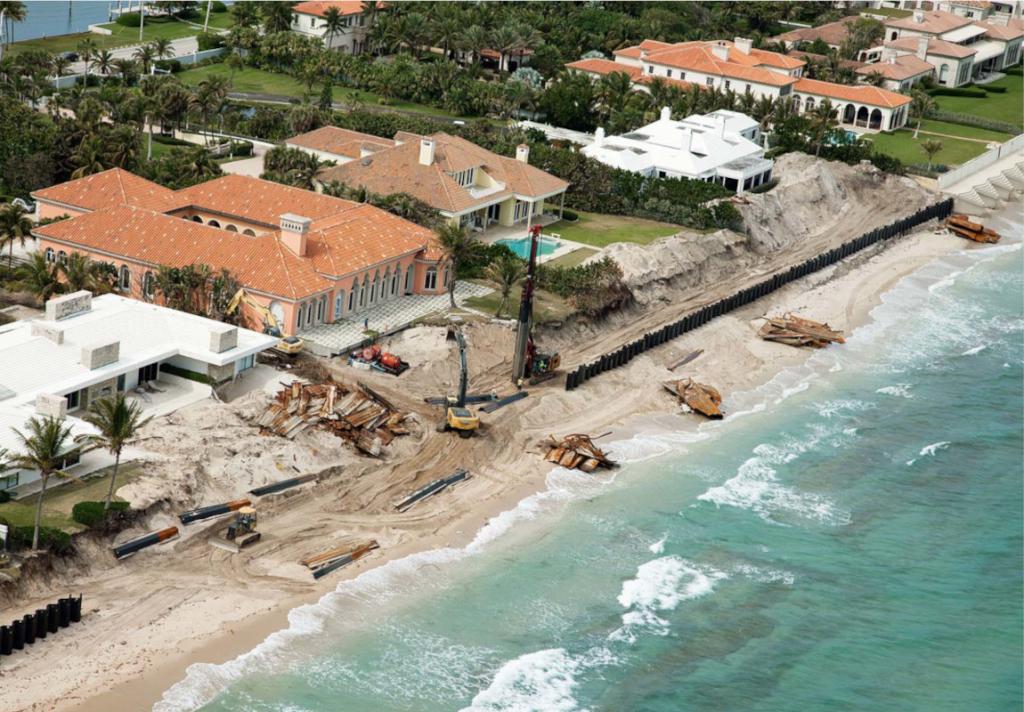
Hazard Protection Solutions
Hurricane Sandy in Manalapan.
870 tonnes AZ 26-700 A572 GR. 50
210 tonnes AZ 19-700 A572 GR. 50
165 tonnes short sheet piles (AZ 18, AZ 19-700,
AZ 26-700, AZ 14-770, AZ 37-700)
Manalapan Seawall & Storm Protection/Erosion Control Palm Beach, Florida | USA
Manalapan, a historic town along Florida's East Coast, faced significant challenges after Hurricane Sandy in 2012. With a rich post-World War II heritage and stunning oceanfront estates, the community swiftly responded to protect its shoreline. Here's how they fortified their defenses against future storms.
Download the full case study
History
In the two decades following World War II, the luxurious resort area of West Palm Beach nearly doubled in population as veterans stationed at the local air base returned to the city to live at the end of the war. Located on the east coast of Florida along the Atlantic Ocean, large estates were built seaside in the town of Manalapan, creating breathtaking views of the barrier islands while facing up against the most active hurricane path in the world.
In the 1960s, residents sought to protect the nearly 170 oceanfront properties against the ocean’s surge by constructing sea walls of PMA 22 steel sheet piles driven into the beach sand with steel tiebacks anchored to concrete deadmen approximately 3 to 4 m inland.

Problem
In late October 2012, Hurricane Sandy caused extensive damage along the East Coast, including overtopping sea walls in South West Palm Beach. The storm surge led to significant property damage, with costs exceeding $50 billion, making it one of the most devastating storms in U.S. history. In Manalapan, sea water overtopped the walls, causing soil erosion, snapping steel tieback anchors, and compromising the support system of steel sheet piles. To address the damage before the next hurricane season, homeowners faced tight deadlines imposed by the Environmental Protection Agency to avoid disrupting sea turtle nesting season.

Solution
After Hurricane Sandy, the homeowner's association and their engineer swiftly replaced the damaged sea walls. Despite being submerged, the old steel sheets showed minimal corrosion, indicating their durability. They opted for coated AZ 26-700 steel sheet piles for the main sea wall, increasing its height to 2.5 m above the mud line. Shorter steel sheet piles stabilized the wall, driven into limestone and connected with C9 corner sections. In undamaged areas, property owners reinforced sea walls with coated steel sheet piles, concrete deadmen, and tiebacks. After the sea turtle nesting season, they began installing steel sheet pile walls for boat slips on the intracoastal side.